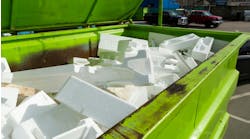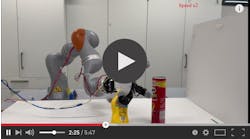What buyers see most often while shopping for new ventilation equipment are claims about construction, reliability or how long a supplier has been manufacturing them. These claims, however, have become standard promotional tactics and do little to help a buyer differentiate one ventilation unit from another.
Compound the issue, manufacturing's needs have changed over the past 20 years. Improving plant safety and productivity are constant, pressing concerns, and achieving regulatory air-quality standards is an important factor in reaching those goals.
But, creating an effective ventilation system requires that a wide range of variables be considered, from the type of dust and fumes produced to the air-flow dynamics that carry the particulates and pollutants throughout a plant.
Here are five important features for buyers to examine to ensure the right factors are considered when choosing a dust and fume collection system.
1. Rough and Ready
A well-designed dust collector integrates every component needed to make it operational (cabinet, motor, blower, control panel, safety features, filters) into one cohesive design. The only things that should be required on-site are simple electrical and compressed air connections. Too often, buyers have to spec a cabinet and the mechanical components separately, and then are faced with hours or days of labor expenses to wire and connect the individual components.2. Get Wired
The best control systems monitor the collector's performance continuously, including the blower and the filter differential pressure; have built-in diagnostic features; and track maintenance history to help maintenance and engineering staff create a safer environment and maximize a collector's performance. A collector with an integrated control panel that has a digital touch screen interface is clean, sleek and far more effective.3. Beware of Suction Loss
Here's the bottom line: Shooting a pulse of air through a filter might dislodge the surface dust but it doesn't necessarily achieve the goal. The natural tendency is for the air transporting the particulate to re-entrain, or re-deposit the particulate on adjacent filters rather than into the containment unit. In the end, this pulse-cleaning technology largely is ineffective because the re-deposited dust continues to plug the filters.Collectors with advanced pulse-cleaning technology utilize a more highly engineered solution based on air-flow science. Each filter should have a dedicated electronic pulse mechanism or valve that is programmed in sequence. A sequential, double-pulse action will neutralize the tendency of the particulate to re-deposit on nearby filters. Even distribution of the pulse pressure through a cone or similar device helps ensure that the entire filter will be cleaned, not just the top or bottom.
4. Gaze into the Future
Keeping a lid on rising operating costs is an ongoing challenge for everyone in business. Filters are one of those costs. Dust collectors should have high-quality filter media in order to help keep a plant cleaner and safer for employees. But how long are the filters projected to last? Three months? Six? A year? Are they simple and fast to replace when it's time to do so?The correct size and design of a system also is crucial. If a collector is too small for the application, it will result in rapidly consumed filters.
5. Smart Collectors Put Up a Fight
What may be an unrecognized risk is the potential for air leaks during a collector's operation. Cabinet construction is important. Are seams and joints fully welded and engineered to create a perfect seal? Verifying that they are is the first step. The next line of defense should include a sensor in a collector that can detect a leak if one occurs, then instantly shut an operation down to prevent exposure to potentially harmful fumes and particulates.
Read more on safety at EHS Today.
EHS Today is an NED companion site within Penton's Manufacturing & Supply Chain Group.










